
Motorcycle Body Armor Made Clear: Save your Bones!
left for contents
Listen, I get it. Choosing motorcycle body armor can feel like a daunting task with endless options and confusing specs.
It took me breaking a collarbone to really do some research on it. What I found might surprise you…
The standards, codes, and brands are simpler than you think. The materials used nowadays are miles ahead of what was available a decade ago. New viscoelastic armor is lighter, more contouring, more comfortable, better ventilated, and far more protective than older plastic and foam variants.
Even premium motorcycle gear these days often ships with subpar armor – sometimes stooping to thin foam pads. That keeps retail pricing down, but it also puts your hospital bill and pain level way up if (or when) you do take a tumble off your ride.
You deserve better, and I have your back (and elbows, shoulders, knees and more) when it comes to understanding motorcycle body armor so you can ride safely on the road, track, or in the dirt.
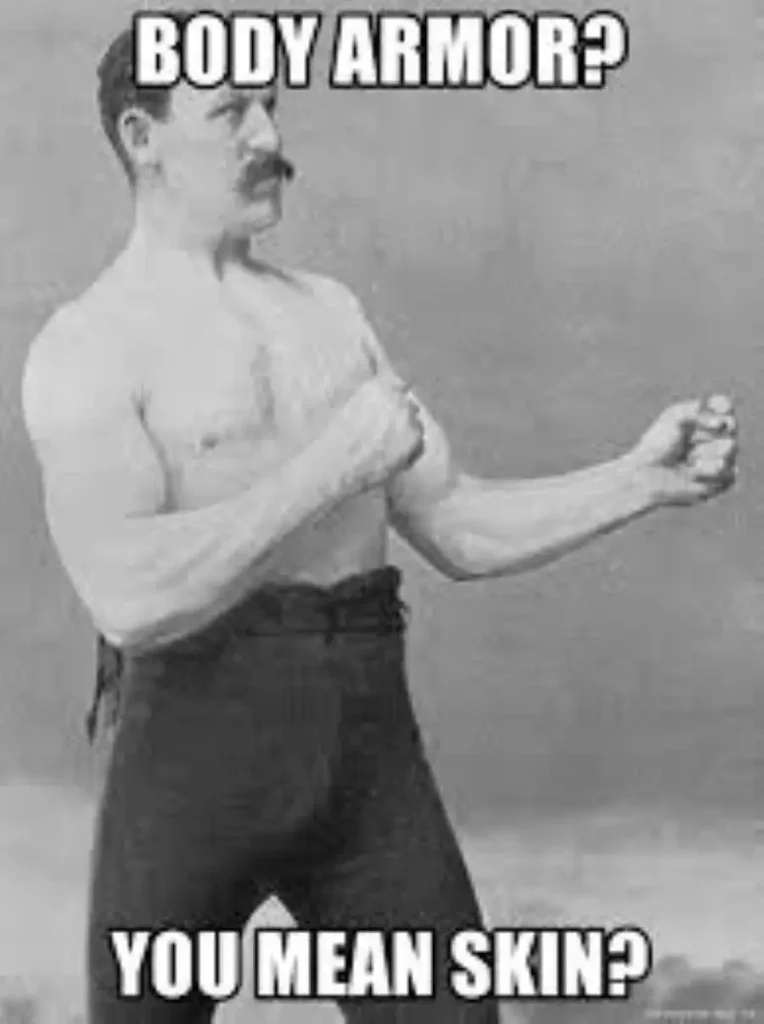
First, I’ll give you a quick rundown so you can pick up the right armor fast and get back to riding. Then, I’ll go through all the details: CE and EN codes, certifications, fit, recommendations for different riding types and more.
Let’s get into it.
Quick Verdict on Motorcycle Body Armor
Before my first time skydiving, my instructor said to me, “Did you know you can skydive without a parachute? You only need one if you want to survive the landing.”
Motorcycle body armor is no different. Wearing it is non-negotiable for saving your bones and joints in the hard impacts of a crash. You should have armor on your upper and lower body while you ride, at least at the elbows, shoulders, back, knees, and hips.

The average street rider should grab a well-fitting jacket and slip in CE Level 2 armor from a reputable brand at the shoulders, elbows, and back. And don’t forget about your legs – you’ll want pants with at least CE Level 2 knee and hip armor. Worried about mixing brands? Don’t sweat it. You can totally slide Dainese armor into an Alpinestars jacket, for example. The armor sizes and pockets for it are fairly standard at this point. More on CE Level 1 and 2 later.
Which are the reputable brands? A few that come to mind are: Forcefield, Alpinestars, D3O (buy from Icon, not Klim), SAS-TEC, Rev’it (Seesmart), and AXIAL.
When it comes to shopping, stick to trusted retailers like Revzilla, Cycle Gear, or J&P Cycles for quality products. Any armor sold on these sites is generally guaranteed to be properly vetted – they won’t lie about the CE rating.
Amazon is an option, but just double-check you’re getting the real deal from a top-notch brand. A good rule of thumb is to avoid a product if you don’t also see it listed on Revzilla.
Get Armor At…
Want fifty times the protection of armor?
Check out motorcycle airbags. These expand in milliseconds in a crash, instantly immobilizing your head and neck as well as providing a cushion around your torso. Some kits, like the Tech Air 5, even offer protection up to your upper arms and hips. Talk about next-level safety.
Check out all the best airbag options in our guide to motorcycle airbags.
What to Look For in Motorcycle Body Armor
So, you want the details? Here’s what to look for in motorcycle body armor and what all the little nuances mean. Let’s start with materials.
Materials
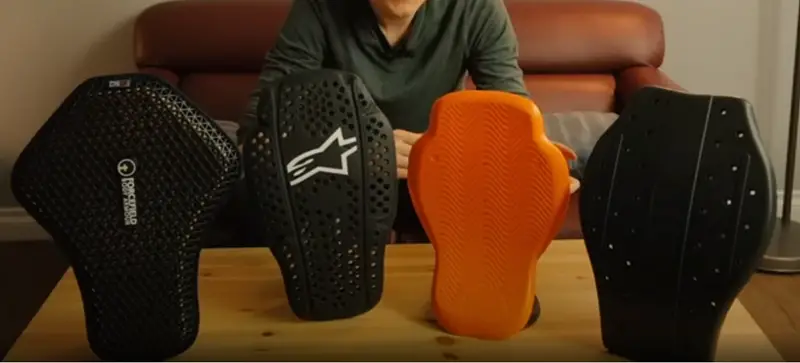
The days of useless foam and rock-hard plastic are over. Viscoelastic armor is where it’s at, and it comes in a bunch of fancy brand names I’ll drop later. The magic of viscoelastic? It’s soft when you’re just cruising, but instantly hardens when you hit the pavement. It does have a shelf-life however – just keep your eye (and hands) on it over time. If it begins to harden (usually 5+ years) and lose that magical flexibility, it’s also losing its ability to disperse those impact forces you don’t want traveling to your bones!
Some armor like that from Forcefield features RPT – Repeat Protection Technology – which means the armor can shift between hard and soft in as little as milliseconds. That means it stays contoured to your body in a crash, even if you roll and impact multiple times.
Comfort and protection in spades right when you need them both.
Fit
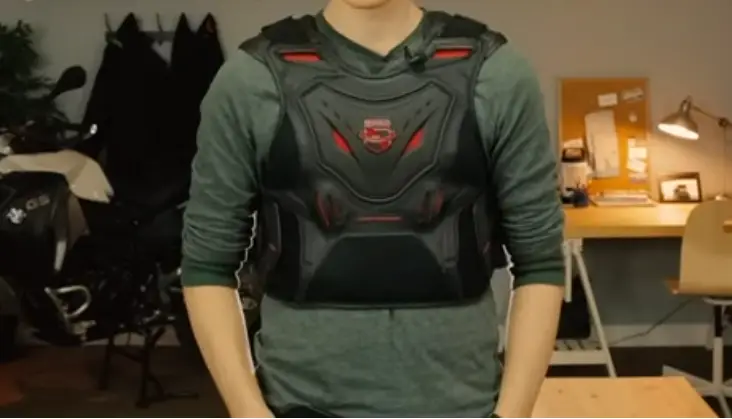
Motorcycle body armor must fit closer to the body, and tight. If armor isn’t snug against your body, it’ll roll off in a crash. And armor that isn’t in place, is no armor at all.
This is a big reason why most old armor that actually did its job was horribly uncomfortable. Nobody wants a hard plastic cup mashed onto their elbows, shoulders, and back while they ride.
Newer viscoelastic armor avoids this by being flexible enough to contour to your joints and curves as you move around on your bike. No awkward gaps or painful pressure points anymore.
Keeping that armor in place requires a well fitting jacket or garment – one with abrasion resistance – to hold it in place. If that’s not what you have now, it’s time for a new jacket.
Ventilation
Almost all body armor these days is vented. Sometimes that means the manufacturer put a couple big holes in the middle, and sometimes that means it’s almost a lattice. Hotter climates call for more holes. This matters more for back armor than elbow, shoulder, knee and hip armor.
Budget
Ah yes, the all important budget. Good motorcycle armor, all in, will probably cost you an extra $150 on your riding gear. That will get you CE Level 2 protection at elbows, shoulders, back, knees, and hips.
Compare that to the price of replacing your hip or knee, or even putting a few pins in your collar bone (nature’s shock absorber) and leave a comment on this post. I was very close to needing collar bone surgery for a fall at around 15 mph – that surgery easily would have cost me $10,000.

The choice is clear.
Reliable Brands
Time to drop some free tips. There are plenty of manufacturers of great motorcycle body armor that’s CE Level 1 and CE Level 2 rated. Some names that stick out to me are:
- Forcefield
- Alpinestars
- Dainese
- D3O (often from Icon or Klim – same armor)
- SAS-TEC
- Rev’it (Seesmart)
- AXIAL
Feel free to mix and match between brands as well. Armor sizes and pockets are fairly standard. You’ll want to pay a bit more attention with back protectors – these can come in various sizes and lengths. Buy online and try at home.
Riding Type
Armor needs vary depending on the type of riding you’re doing, especially street and track vs offroad. Most street riders will go with the type of armor padding that’s inserted into another garment, although undergarments from brands like Knox (shirt, leggings) and Pando Moto (shirt, leggings) are gaining in popularity.
Off-road riding has a different set of risks than road riding: abrasion isn’t a big problem in the dirt, but impacts with rocks and trees is far more likely. This is why armor suits exist: they provide very little abrasion resistance or slide on pavement, but have oversized pads to take all sorts of wild impacts. These are great for off-road, but not suitable for street riding.
There are also many options for strap on armor. Some of these are targeted at track racers – like large back and chest protectors worn under leathers. Others, like knee braces, are targeted at off-road riders.
Let’s get into the nitty-gritty now: safety certifications, CE ratings, and EN codes.
Motorcycle Body Armor Demystified: CE Levels and EN Codes
So you’re in the shop, looking at some body armor, and you see this.

What does that mean? Let me break it down.

This is your average CE rating tag.
- Certified for Motorcycling: This little pictogram just means the information on the tag relates to motorcycling.
- Area Protected: More on these codes below. E means Elbow.
- CE Level: The impact absorption this piece will achieve – either 1 or 2 (there is not 3, 4 etc). More on what exactly CE Level 1 and CE Level 2 are below.
- High and Low Temperature: T+ on the label means this piece was tested at 104 F (40C) and it still passed the test for whatever CE Level it’s certified to. T- means it was tested at 14 F (-10C) and still passed. This is uncommon, and usually unnecessary.
- EN Standard Governing this Piece: This piece was held to EN1621-1 standard developed in 2016. More on this below, but you’ll usually see EN 1621 on motorcycle body armor.
- Size aka Type A or B: B is what you want. A means reduced coverage and is only for special applications (i.e. you like pain).
It’s worth mentioning that all this CE and EN business is a European thing, but it has spilled over into the rest of the world market. In Europe, it’s illegal to sell gear as motorcycle safety equipment if it isn’t certified under these standards.
There are no similar standards and enforcement in the USA, but many riders find the European CE labels helpful anyway.
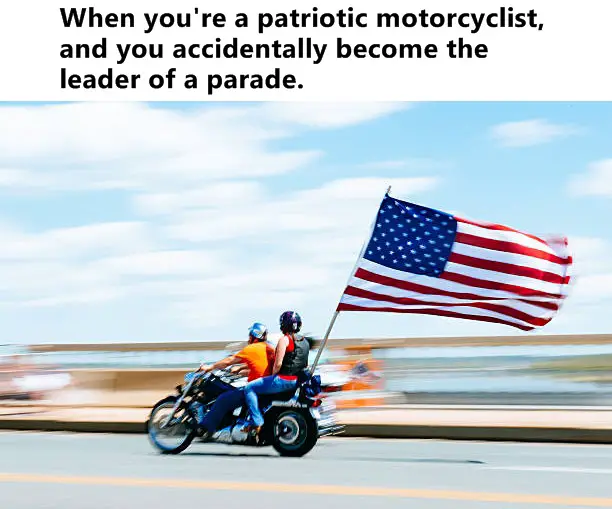
Protection Areas
Each protection area has its own code:
- S: Shoulder armor
- E: Elbow armor
- H: Hip armor (ventilation isn’t crucial here, but beefiness is!)
- K: Knee armor
- K+L: Knee and upper/middle tibia armor
- L: Lower leg armor (below the knee)
- KP: Knuckle armor
- B/FB: Full back protector
- CB: Central back protector
- L/LB: Lumbar protection only
Understanding CE Level 1, CE Level 2, and EN 1621
Motorcycle body armor is designed to reduce impact forces by distributing them across the armor. Same ideas as a nail bed: lay on a single nail and you’re drawing blood immediately. Lay on a thousand nails and you’re fine, since your weight is distributed across all the nails.
CE Levels correspond to the maximum amount of force transferred to your body through the armor.
- CE Level 1 rated armor can transfer a maximum of 18 kN to your body through back and chest armor with a max of 35 kN for limb armor.
- CE Level 2 rated armor can transfer a maximum of 9 kN to your body through back and chest armor with a max of 20 kN for limb armor.
Almost all motorcycle body armor will be certified under standard EN1621 and mention a specific year when that standard was developed. Here are the latest standards:
- EN1621-1:2012: For limbs (everything except chest and back)
- EN1621-2:2014: For back protectors that protect the spine and back
- EN1621-3:2017: For chest protectors that protect the rib cage. Some off-road protectors will be certified under EN14021 standard instead.
You may also see EN340:2003 – this is not motorcycle specific, and is less protective than the EN1621 standard. Stay away!
If you’re looking at a motorcycle airbag, those are developed under the EN1621-4:2013 standard (when lanyard-activated).
Speaking of airbags, if you really want protection…
The Best Motorcycle Body Armor: An Airbag
Motorcycle airbags are 50 times more effective than armor.
Literally, motorcycle airbags are as protective as wearing FIFTY back protectors, but without any of the bulk.
People complain about two things with airbags: cost, and lack of ventilation.
On cost: See my earlier point about the cost of armor. If an airbag saves you from just one broken bone, it has already paid for itself many times over.
On ventilation: Easily solved by sizing up. Since an airbag inflates to a pretty impressive size in a crash, one size up won’t mean it’s moving around on you a ton in a crash. That extra room will allow air to flow underneath the airbag and to your hot parts.
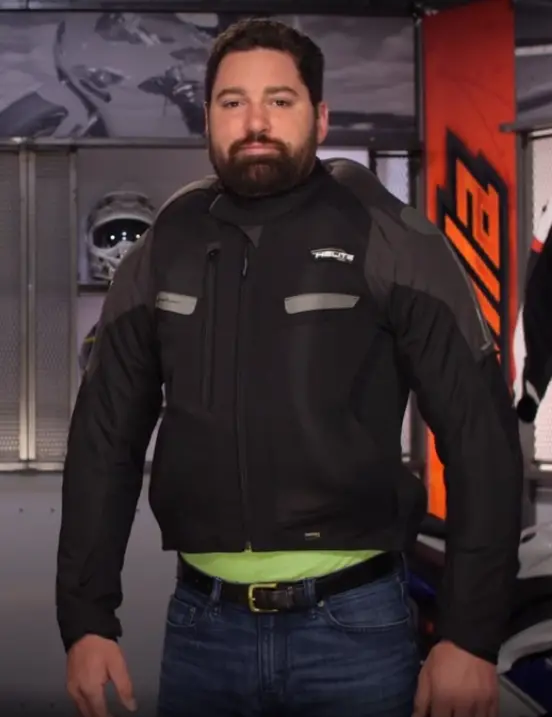
Most airbags are just vests covering your chest and back while stabilizing your neck in a crash, but some like the Tech Air 5 cover the hips and shoulders too.
Read more in our guide to motorcycle airbags.
FAQs
Do I need to wash motorcycle body armor?
You do not need to wash motorcycle body armor. Most armor doesn’t absorb water or sweat, so it won’t stink or get dirty. You can give it a wash if you really want, but it’s usually not necessary. You should, however, wash your motorcycle jacket often so it protects you for years to come.
Can I wear off-road motorcycle body armor on the street?
You should not wear off-road motorcycle body armor on the street, unless you’re wearing a highly abrasion resistant motorcycling garment over top. Fashion leather jackets don’t count (the stitching won’t hold in a crash). The mesh that holds those off-road suits together will tear up completely in any medium to high speed crash, making those pads disappear. Then you’re about as well off as if you wore a t-shirt.
Do premium motorcycle jackets come with good armor?
Surprisingly, many premium motorcycle jackets don’t come with great armor. Why? To keep that retail price in check. You’ll need to upgrade the armor by adding your own.

Christian
1 year ago
Great article, Evan! I’m about to upgrade to Level 2 knee armor and this piece was very helpful. Appreciate the no-nonsense lingo, too because riding motobikes is very dangerous indeed. Good gear can make the difference between being able to show up for work next day or not after an accident..or checking out all together 🙁
All the Best and keep on riding!
ssFatGuy
5 months ago
Great article. Excellently written and to the point!
Having ridden for 50 years now, I have decent gear and armor. One thing I think you should mention is that Visco elastic armor does has a shelf life. You should replace your armor and your helmet every five years at minimum.
Evan Rally
5 months ago
Good point, thank you I will note that. The older foam armor is even worse – turned to literal dust in an old jacket my dad has!